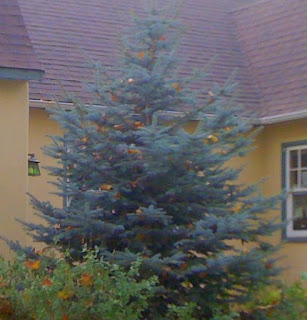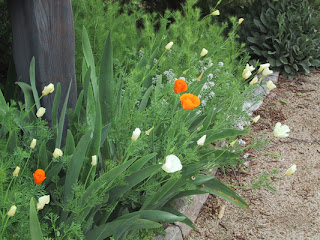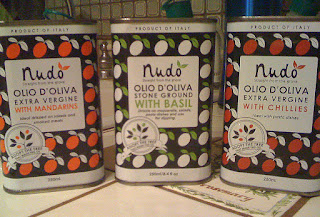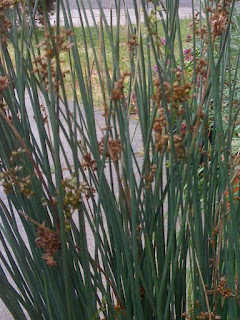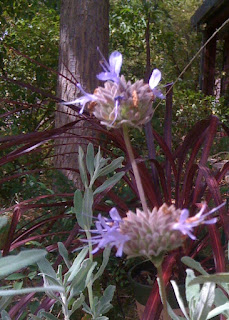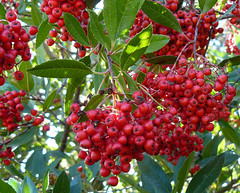
The best laid plans of mice and men, oft go astray Robert Burns
Well, as promised, here are the details from today's TV appearance on Channel 10's Sac and Co. These appearances seem to have a life of their own. (and as an aside, did you know the above line was written by Burns after he ran over a wee mousie's house with his tractor?). So, too, today's show. It was great fun and I loved bringing the plants ... just didn't get to showcase them in enough detail. Lucky for me I have a blog!!!
More about Why Fall is for Planting ...
First I want to say a bit more about why "Fall is for Planting". Getting a plant established in the garden is sort of like getting the baby off the bottle. Until a plant puts its roots into the surrounding soil, it depends on us for it's water and nutrients. Well, we want to get it off that bottle!
How do we do this? The roots have to grow ... the further the better. This takes cell division, and that doesn't happen when it's uber hot or cold. That's why the milder weather in fall and spring is a good time to plant.
Planting in rain-sodden ground isn't good, either, because plants can't take up oxygen when water's taking up all the spaces, and plants need oxygen so they can breathe. Rain fall is iffy in the spring, that's why I say fall is numero uno. You have a few months that are usually light on rain, when the soil's warm and the weather's mild. I find that fascinating, but I'll shut up now. :)
Today's CA Natives
(My thanks to Windmill Nursery in Carmichael for lending us the plants!)
Abutilon palmeri, Superstition Mallow
Lovely yellow cup-shaped flowers bloom throughout the year. Grey-green soft fuzzy leaves, drought tolerant, full sun to partial shade.
Heteromeles arbutifolia, Toyon
Can be kept to 6 - 8' with pruning, and up to 20' with regular water. White flowers in the summer, red berries in the winter (that songbirds love). Hollywood got its name from this So Cal shrub. Very hardy!
Muhlenbergia rigens, California Deer Grass
Showy native grass whose long spikes move with the breeze. Easy to grow, takes abuse!
Penstemon heterophyllus 'Margarita BOP', Foothill Penstemon
This photo is horrid, but the colors are real...gorgeous, gorgeous blue flowers tinged with pinks and white. Drought tolerant. Hummingbirds and butterflies.
Arctostaphylos, 'Emerald Carpet' Manzanita
Healthy attractive drought tolerant ground cover, grows 1' x up to 6'

Salvia apiana, White Sage
This plant just smells like the desert. I hear it's used for "smudging" to chase evil spirits away! Very hardy, drought tolerant.
Lassoing filaginifolia var. californica 'Silver Carpet', California Aster
Another great ground cover, growing 1' to about 4' wide.
Juncus patens, 'Elk Blue', California Rush
I would love to use a mass planting of this, a swathe of blue green stems that look great close up.
Artemisia pycnocephala 'David's Choice', Beach Sandwort
This artemisia looks much like the popular "Powis Castle". Soft and grey-green mounds with funky yellow flower shoots!
Ceanothus, 'Julia Phelps', Julia Phelps Ceanothus (California Lilac)
Any ceanothus is a treasure, especially when it's in bloom. This one gets up to 8' so it would be quite impressive covered in early spring with its indigo blue blooms! Drought tolerant.

Calliandra californica, Baja Fairy Duster
Too cute for words with its fine textured leaves and it's plumed wand-like flowers. This evergreen grows up to 6'. Hummingbird favorite.
Mimulus 'Jack', Scarlet Monkey Flower
This unusual monkey flower needs more water and a bit more shade than other monkeys. But, it blooms throughout the year and hummingbirds love it's wine-colored flowers.
Salvia clevelandii 'Allen Chickering', Cleveland Sage
This shrub is a must. Comes in several sizes, with some variation in flower color, but all great! The flowers grow in whorls on upright stems and look good long after they've lost their color. If you drive Greenback near I-80 you'll see them in the median strip. Proud as can be!
Also mentioned in the segment:
Tulbaghia violacea, Society Garlic; Lavender;
Stachys byzantina, Lamb's Ears, Mediterranean plants that share our growing conditions. A wonderful mix with our CA natives!
Where to Learn More About California Native Plants
Upcoming workshop at
Windmill Nursery; Sept 18
California Native Plant Society Sale; Sept. 25 & 25, McKinley Park; 10 - 2
UC Davis Arboretum Sale; Sept 25, UC Davis; 9 - 11 members only; 11-1, public
Demonstration Garden at the Old City Cemetery, Sacramento
Local Nurseries: Windmill and
Cornflower Farms are the best providers of CA Natives in our area !
A few of the wonderful on-line purveyors of great info and some mail order ...I'm sure there are more:
Theodore Payne Foundation (mail order seeds, anyone?),
Las Pilitas,
Annie's Annuals
And, me... I'm really a beginner in this field, but I'm enthusiastic!
 |
| Catching the Fairy Dust seed at the Theodore Payne Fdn. |
Whether you need garden design, coaching, seasonal maintenance or planting, Geno's Garden can help!
Call me at (916) 764-5243, or email hansonja@aol.com.


